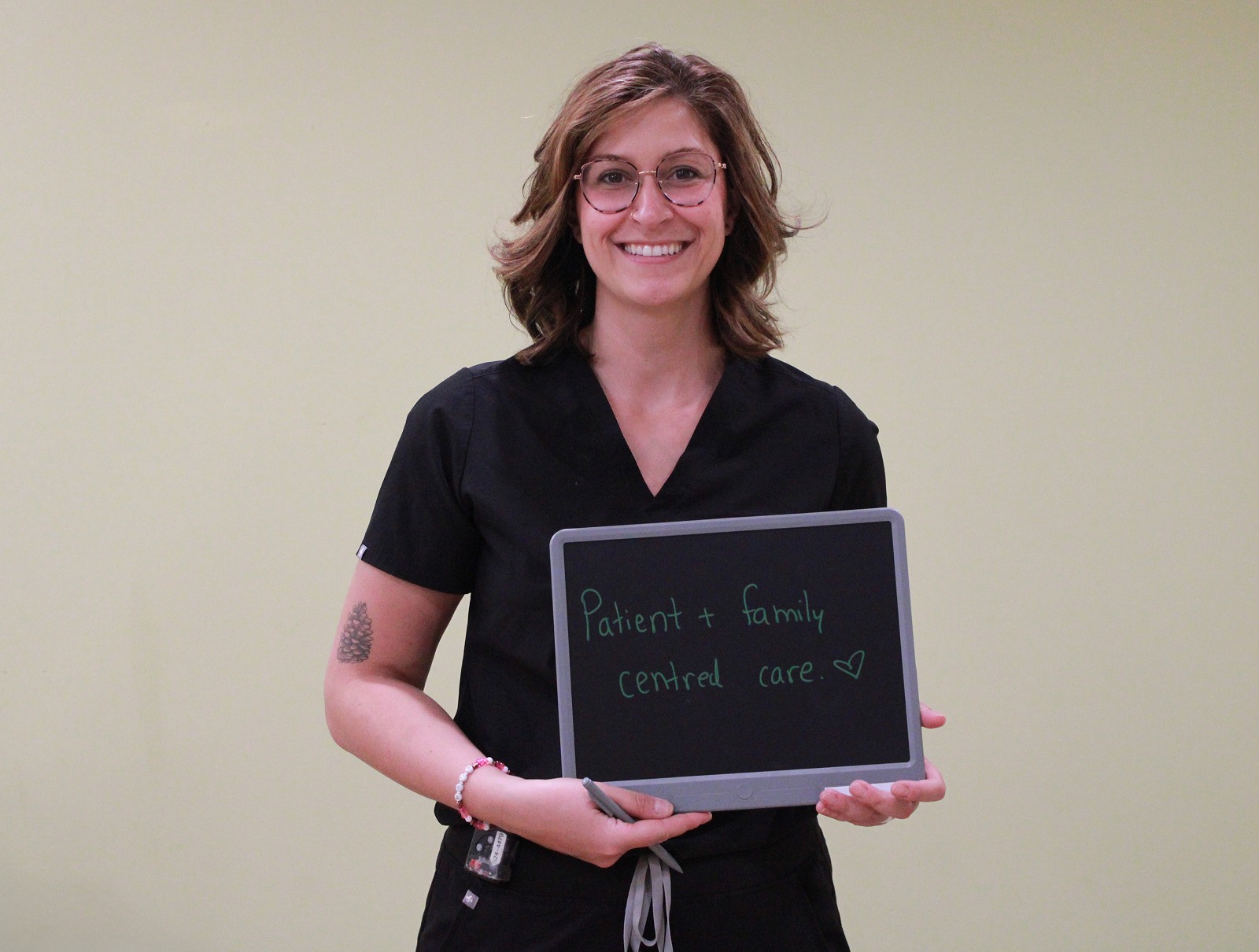Family CARE Grant Helps ICU Patients Communicate and Connect
Published Tuesday, August 12, 2025

Thanks to a Family CARE Grant, Vanessa Kroeker, ICU Physiotherapist, at the Health Sciences Centre, now uses Boogie Boards to support patient communication in the ICU.
Communication is something most of us take for granted. But what happens when you find yourself in the ICU unable to talk?
Vanessa Kroeker, a physiotherapist in the Thunder Bay Regional Health Sciences Centre's Critical Care Unit (ICU), sees it happen all the time.
“Before we even start physiotherapy, there is a lot of communications and relationship building that happens,” Kroeker said. “I need to understand what their baseline was – how they moved around before and so on. It's challenging to do when they can't communicate with me.”
Thanks to your support of the Thunder Bay Regional Health Sciences Foundation, patients in ICU have another communication option. Boogie Boards are durable, reusable message boards to write and wipe messages, purchased with a Family CARE Grant.
It can happen in an instant: a traumatic accident, a heart attack, the onset of a serious disease. Any number of events can send patients to the ICU. Not only are visitors restricted, often patients are intubated or have other medical or equipment reasons that prevent them from speaking.
“Communication is such a basic human need,” Kroeker said. “Being unable to communicate and connect with others can isolate us further.”
Boogie Boards are a fast and easy way to open up the world for those ICU patients who are conscious and aware of their surroundings, but cannot talk.
Previously, some patients might use a pad of paper to write things down. However, this had many drawbacks. For one, the paper is not reusable and the pad can quickly run out. Some patients have difficulties holding the pen. They also may not be able to see the pad clearly, especially when the lights are dimmed.
The Boogie Board solves all these problems. It's reusable and more sustainable than paper – patients can quickly erase the boards with the press of a button and start a new note. The stylus is thicker and easier to hold than a pen, and it creates bright neon letters that are easier to see.
“In ICU especially, we can be so focused on making sure the patient is medically stable,” Kroeker said. “But there's a bigger picture. Often, they are there because of sudden, traumatic events, and they're scared. Offering them anything at all that can make them feel more connected can relieve some of that stress and isolation.”
It also helps ensure they are part of their own treatment plan.
“Being able to communicate clearly ensures they have an active role in their recovery.”
Kroeker got this remarkable idea from her two young children, who have their own Boogie Boards. The boards she ordered for ICU are made by the same company, but they are medical grade so they are more durable and easily sanitized.
The Boogie Boards can be used in many different situations. It can help patients communicate with their nurses, doctors, physiotherapists, and other care providers as well as their family and visitors. Nurses can use them as well as a tool for temporarily writing down vitals so they can enter them in the patient record at the central desk.
“It's an invaluable communication tool that helps improve patient care in the ICU,” Kroeker said.
The “CARE” part of Family CARE Grants stands for “Care Advancements Recommended by Employees”. Through this program, you provide frontline staff with funding to bring their great ideas for patient care improvements to life. Last year, your donations helped fund 74 Family CARE Grant projects like the Boogie Boards for ICU. Find out more at: healthsciencesfoundation.ca/familycare
Article By: Graham Strong